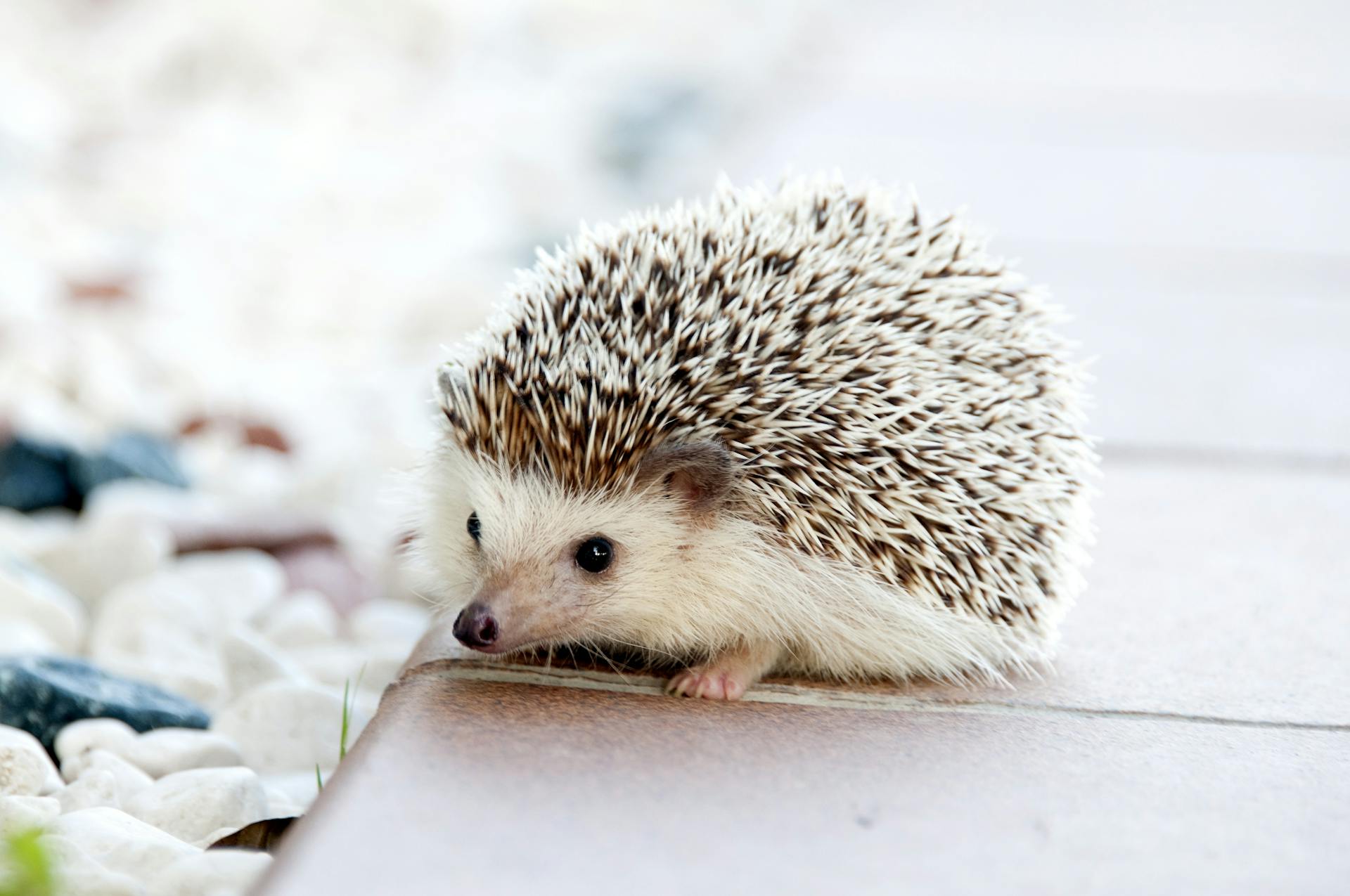Top Effective Strategies for Protecting Hedgehogs in Your English Garden
Understanding the Importance of Hedgehog Preservation
Hedgehogs, those small, spiny creatures, are an integral part of the wildlife in your English garden. However, their populations have been declining due to various threats such as habitat loss, road accidents, and lack of food. It is crucial to understand the importance of preserving these animals and how you can contribute to their welfare.
“Hedgehogs are a vital part of our ecosystem, helping to control pest populations and maintaining the balance of nature,” says Kyrylo from the First Private Hedgehogery in Kyiv, Ukraine, who has been actively involved in hedgehog rescue and rehabilitation efforts.
Lire également : Top Strategies to Minimize Your Dog”s Stress at the Vet: A Comprehensive Guide
Creating a Hedgehog Friendly Garden
To help hedgehogs thrive in your garden, you need to create an environment that is conducive to their needs. Here are some key strategies to make your garden hedgehog-friendly:
Providing Food and Water
Hedgehogs need a reliable source of food and water to survive. Here are some tips to ensure they have what they need:
Lire également : Unpacking the Ethical Dilemmas of Exotic Pet Ownership in Britain
- Food: Hedgehogs are primarily insectivores, so they thrive on a diet rich in insects. You can help by not using pesticides in your garden, which will allow insect populations to flourish. Additionally, you can leave out food specifically for hedgehogs, such as hedgehog food or even cat food.
- Water: Ensure that your garden has a source of fresh water. A shallow dish of water or a birdbath with fresh water can be a lifesaver for thirsty hedgehogs.
Planting Hedgehog-Friendly Plants
Certain plants can make your garden more appealing to hedgehogs. Here are some plants that are beneficial:
- Native Plants: Plants like lavender, coneflowers, and wildflowers attract insects, which are a primary food source for hedgehogs.
- Berry Bushes: Berry bushes like strawberries and raspberries provide fruit that hedgehogs enjoy.
- Leaf Litter: Leaving some areas of your garden with leaf litter can provide shelter and habitat for hedgehogs.
Avoiding Hazards
Hedgehogs face several hazards in gardens, including:
- Ponds and Pools: Ensure that any water features in your garden have a shallow area or a ramp for hedgehogs to climb out if they fall in.
- Garden Fences: Make sure your garden fences have small gaps (about 13 cm x 13 cm) to allow hedgehogs to pass through.
- Lawn Mowers and Strimmers: Be cautious when using lawn mowers and strimmers, as hedgehogs can often hide in long grass.
Building a Hedgehog House
Providing a safe and cozy place for hedgehogs to rest, hide, and even hibernate is essential. Here’s how you can build or purchase a hedgehog house:
Materials Needed
- Wooden Box: A wooden box or a plastic container with a small entrance hole.
- Bedding: Dry leaves, straw, or shredded newspaper.
- Location: Place the house in a quiet, sheltered spot, ideally in a corner of your garden.
Tips for Building a Hedgehog House
- Size Matters: The house should be large enough for a hedgehog to curl up inside but small enough to retain heat.
- Ventilation: Ensure there is some ventilation to prevent moisture buildup.
- Camouflage: Cover the house with leaves or other garden materials to blend it into the surroundings.
Community Efforts and Advice
Protecting hedgehogs is not just an individual effort but also a community endeavor. Here are some ways you can get involved and seek advice:
Joining Local Initiatives
- Hedgehog Street: This is a campaign by the People’s Trust for Endangered Species (PTES) and the British Hedgehog Preservation Society to encourage neighbors to create hedgehog-friendly habitats.
- Local Wildlife Groups: Join local wildlife groups or conservation societies to learn more about hedgehog preservation and get involved in community projects.
Seeking Advice
- Wildlife Experts: Consult with local wildlife experts or veterinarians for advice on caring for injured hedgehogs or creating the best habitat.
- Online Resources: Websites like The Wildlife Trusts and the British Hedgehog Preservation Society offer valuable tips and resources on how to help hedgehogs in your garden.
Practical Insights and Actionable Advice
Here are some practical tips and actionable advice to help you make your garden a haven for hedgehogs:
Checklist for a Hedgehog-Friendly Garden
- Remove Hazards: Check your garden for any hazards like sharp objects, toxic substances, or deep holes.
- Provide Shelter: Ensure there are places for hedgehogs to hide, such as under bushes or in log piles.
- Maintain Diversity: Keep a diverse garden with a mix of plants, trees, and flowers to attract a variety of insects.
Table: Comparing Different Types of Hedgehog Houses
| Type of House | Materials | Advantages | Disadvantages |
|---|---|---|---|
| Wooden Box | Wood, nails | Natural, easy to build | Can rot if not treated |
| Plastic Container | Plastic, scissors | Waterproof, easy to clean | May not blend into surroundings |
| Commercial Hedgehog House | Various materials | Specifically designed for hedgehogs, durable | Can be expensive |
Quotes from Experts
- “Creating a hedgehog-friendly garden is not just about providing food and shelter; it’s about creating a holistic environment that supports their entire lifecycle,” says a wildlife expert from The Wildlife Trusts.
- “Every small action, like leaving out food or building a hedgehog house, can make a significant difference in the lives of these amazing creatures,” adds Kyrylo from the First Private Hedgehogery.
Protecting hedgehogs in your English garden is a rewarding and important task. By creating a hedgehog-friendly environment, providing the right food and water, and building safe shelters, you can significantly contribute to the welfare of these animals. Remember, every small action counts, and collective efforts can make a substantial difference in preserving hedgehog populations.
Final Tips
- Be Patient: It may take some time to see the results of your efforts, so be patient and persistent.
- Educate Others: Share your knowledge with neighbors and friends to create a broader impact.
- Enjoy the Journey: Watching hedgehogs thrive in your garden can be incredibly rewarding, so enjoy the journey of helping these wonderful creatures.
By following these strategies and tips, you can make your garden a safe and welcoming place for hedgehogs, helping to ensure the preservation of these beloved animals for generations to come.











